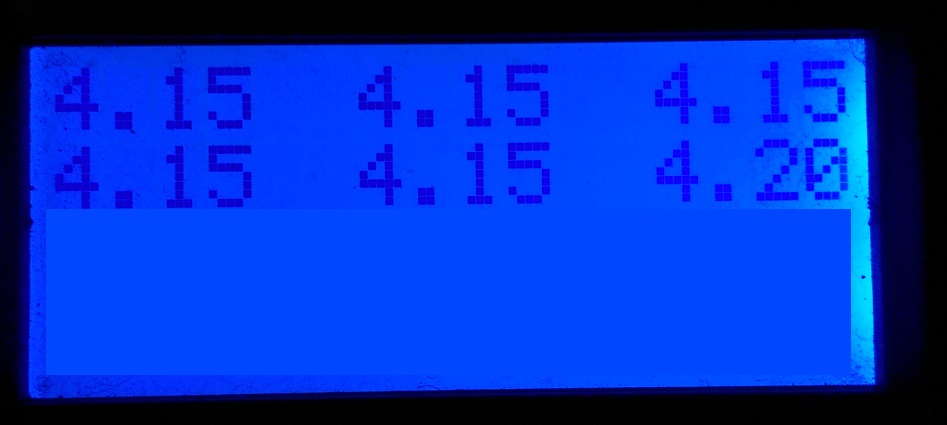I recently noticed that I have one series cell going bad on my battery pack and just thought to show how this manifests itself, so other people can also test their own packs.
I’m pretty sure the series cell got damaged when I had earlier charged my packs without balancing, so I’m pretty sure it got overcharged at some point and what I’m now seeing is the effect from it. I of course these days charge only with balancing, but due to the damaged cells it takes quite a long time to charge and balance the pack after a run.
So what’s going on with the cells? Well first indicator of something wrong with them is that they are clearly warmer than the other cells in the pack after a run, as is evident from the IR-picture below. This indicates higher internal resistance compared to the rest of the cells, meaning that we are losing more power from the cell as a heat inside it.
So my series cell 6 is going bad on my 6S4P pack.
Well I don’t have a IR-camera to see if there is a hotspot somewhere on my pack! It’s okay, there is also another quite simple way to see if a series cell is going bad and that is simply by measuring the voltage of each series cell at the end of a run, assuming that you have balanced the pack while charging.
Below are the series cell voltages at the start of the charging. Can you find the difference between them?

Later in the charging cycle the situation actually starts to look normal. But how? Cell 6 was 0.3 V lower than all the other cells and now it’s the same voltage as them? It behaves like it actually has lost capacity and is therefore charging faster compared to the rest of the cells.

Then the second problem appears at the end of the charging cycle when the balancing starts. Now cell 6 is already at 4.20 V while all the other cells are 4.15 . This is where a lot of time is wasted, because the maximum charging current is only 0.1 Amps, because the charger has to discharge cell 6 at the same rate so it doesn’t get overcharged. So cells 1-5 are going to take a lengthy time to charge up.

So to TLDR, balance charge your pack, measure the voltages after that to make sure that they indeed are what they should be (~4.20 V). Go for a ride and measure the cell voltages again at the end of it. The cell voltages should still be around the same in the whole pack and any large swings could be an indication of a problem.
So the end result is that because of one bad cell in my pack I lose a sizable amount of range. Maximum power delivery is also lowered because the higher internal resistance of the cell causes a larger voltage drop over the cell. This also presents a possible fire hazard with high discharge currents, the cell might possibly degrade faster over time due to the added heat stress and increase the internal resistance even more leading to a vicious cycle.
Conclusion: ALWAYS charge with balancing. Otherwise you might actually be slowly destroying your battery.









 I assume its better if I let every series pack charge to the max charging voltage instead of just charging the single series pack to match the others ?
I assume its better if I let every series pack charge to the max charging voltage instead of just charging the single series pack to match the others ?